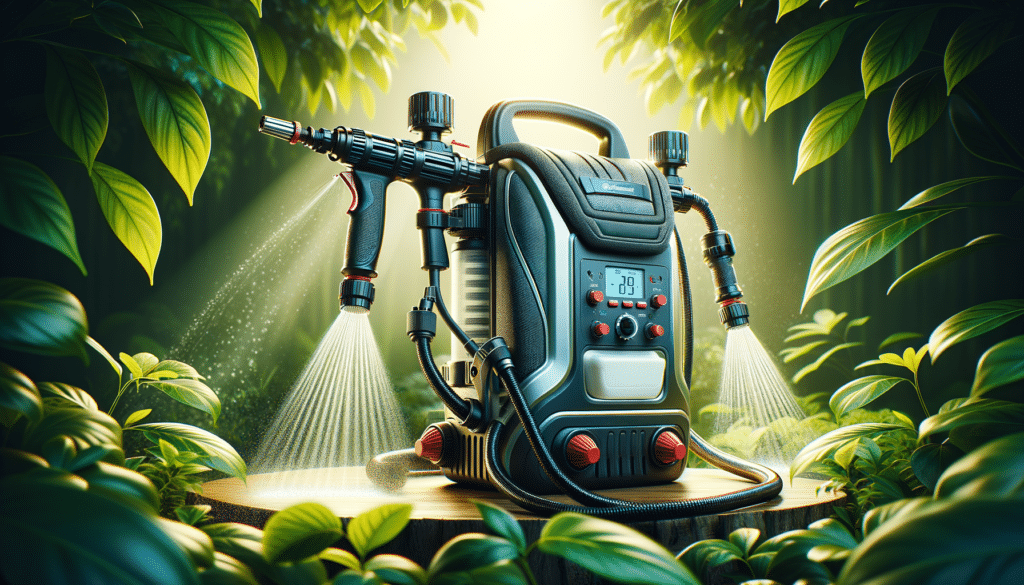Understanding the Basics of Backpack Sprayers
Backpack sprayers have become a staple for gardeners, landscapers, and agricultural professionals alike. These devices are designed to provide a convenient, hands-free method of applying liquids over large areas, making them indispensable for tasks such as applying fertilizers, herbicides, or pesticides. The basic structure of a backpack sprayer includes a tank, a pump, a wand, and a nozzle. The tank is usually strapped onto the user’s back, allowing for easy movement and access to hard-to-reach areas.
One of the primary benefits of using a backpack sprayer is its efficiency. With the ability to cover a large area quickly, users can save time compared to using handheld sprayers or watering cans. Additionally, the pump mechanism allows for consistent pressure and a uniform spray pattern, which is crucial for even application. This consistency helps in reducing waste and ensuring that the sprayed solution is effectively distributed.
Backpack sprayers are also versatile. They can be used for various applications, such as garden maintenance, pest control, and even cleaning tasks. Depending on the model, some sprayers offer adjustable nozzles and pressure settings, giving users control over the spray pattern and intensity. This adaptability makes them suitable for both delicate plants and more robust agricultural tasks.
The Advantages of Electric Backpack Sprayers
Electric backpack sprayers have revolutionized the way we approach spraying tasks. Unlike manual sprayers that require physical effort to pump and maintain pressure, electric models use a battery-powered motor to deliver a continuous and consistent spray. This feature not only reduces user fatigue but also increases efficiency, allowing for longer spraying sessions without interruption.
One of the standout features of electric backpack sprayers is their ease of use. With the push of a button, users can activate the spray, eliminating the need for manual pumping. This simplicity is particularly beneficial for large-scale operations where time and energy conservation are paramount. Moreover, the consistent pressure provided by the electric motor ensures that the spray pattern remains uniform, which is critical for achieving desired results in pest control or fertilization.
Another advantage of electric backpack sprayers is their environmental impact. Many models are designed to be energy-efficient, with rechargeable batteries that reduce the need for disposable power sources. This eco-friendly approach aligns with the growing trend towards sustainable gardening and farming practices. Additionally, the precision offered by electric sprayers can lead to reduced chemical usage, as the targeted application minimizes waste and runoff.
Exploring the Use of Watering Backpacks
Watering backpacks offer a practical solution for individuals who need to water plants in areas where traditional hoses or watering cans are impractical. These devices are particularly useful in community gardens, urban landscapes, and remote agricultural fields. By strapping a water tank onto the back, users can easily navigate through rows of plants, ensuring that each one receives the necessary hydration.
One of the primary benefits of using a watering backpack is its mobility. Unlike stationary watering systems, these backpacks allow users to move freely and reach plants that are located in difficult-to-access areas. This mobility is especially advantageous in large gardens or farms where plants are spread out over a vast area. Additionally, the backpack design distributes the weight evenly across the user’s back, reducing strain and allowing for prolonged use without discomfort.
Watering backpacks also offer a level of precision that is often lacking in other watering methods. With adjustable nozzles and flow control, users can tailor the water output to suit the needs of different plants. This precision helps in conserving water, as it ensures that only the necessary amount is applied, reducing waste and promoting sustainable gardening practices. Furthermore, the ability to target specific plants means that users can avoid overwatering, which is a common issue that can lead to root rot and other plant health problems.


